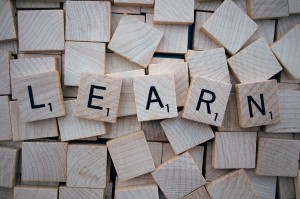
 Become a PowerPoint Guru by Dave Tracy
Become a PowerPoint Guru by Dave Tracy
Learn the methodologies, frameworks, and tricks used by Management Consultants to create executive presentations in the business world.

 Become a PowerPoint Guru by Dave Tracy
Become a PowerPoint Guru by Dave Tracy
 Top products are the creation of top designers and developers. Lean Product Development helps in developing expert designers and developers, who are excellent problem solvers and are adept at creating innovative solutions. Developing Key Talent for Product Management accelerates Innovation and time to market while lowering costs.
Top products are the creation of top designers and developers. Lean Product Development helps in developing expert designers and developers, who are excellent problem solvers and are adept at creating innovative solutions. Developing Key Talent for Product Management accelerates Innovation and time to market while lowering costs.
Managers responsible for developing creative products and solutions need to take 5 key steps, in order to facilitate Learning and Development of Key Talent in the manufacturing sector:
Let’s dive deeper into the steps to effective Talent Management.
STEP-1 Incorporate Technical Excellence into the Organizational DNA
Technical mastery needs to be at the heart of everyday work practices and the guiding principle for manufacturing concerns. Incentives, recognition, and rewards should be created based on technical competence, and it should be incorporated into routine business practices. Likewise, training programs need to be geared towards enhancing the engineers’ technical capabilities.
For instance, technical competence is an integral element of training new engineers at Toyota. One of the main requirements for qualifying for an engineering leadership position at the company is mentoring of young engineers. Similarly, Ford Motor Co. has a technical maturity model in place for each department in the engineering function. The giant automaker reinforces this when creating roles and responsibilities, conducting design reviews, and remunerating its engineers. These measures help curb attrition and motivate people to stay longer.
STEP-2 Create and Implement Design Standards
The next step is to develop design standards and execute them. Design standards should be set in place and implemented by using the existing organizational knowledge. Design leaders should hold regular sessions with developers on a smart board and solicit their views on the layout of a certain system and training an apprentice in design principles. These design guiding principles should be compiled into user-friendly handbooks for future design and development programs. Lessons learnt from each project should be incorporated into the design standards with regular updates to the handbooks.
Toyota reserves 10-15 days out of the development project time period for the development team to ponder over the lessons learned from an ongoing project. The development team incorporates these lessons into the design standards and updates the design manuals with these newer experiences.
STEP-3 Hold Regular Technical Design Reviews
The 3rd step involves holding frequent technical design reviews to nurture people via action learning and collaboration. The product design and development units should organize weekly technical design assessments. The assessments need to be conducted at the design and development facilities—factory premises, test lab, or prototype shop—instead of a conference room. This helps in gaining practical knowledge and skills. Regular assessments assist in developing design and engineering teams through on-the-job experiences and cross-unit cooperation.
Interested in learning more about the other steps to facilitate Learning and Development of Key Talent in the manufacturing sector? You can download an editable PowerPoint on Lean Product Development: Talent Development here on the Flevy documents marketplace.
You can download in-depth presentations on this and hundreds of similar business frameworks from the FlevyPro Library. FlevyPro is trusted and utilized by 1000s of management consultants and corporate executives. Here’s what some have to say:
“My FlevyPro subscription provides me with the most popular frameworks and decks in demand in today’s market. They not only augment my existing consulting and coaching offerings and delivery, but also keep me abreast of the latest trends, inspire new products and service offerings for my practice, and educate me in a fraction of the time and money of other solutions. I strongly recommend FlevyPro to any consultant serious about success.”
– Bill Branson, Founder at Strategic Business Architects
“As a niche strategic consulting firm, Flevy and FlevyPro frameworks and documents are an on-going reference to help us structure our findings and recommendations to our clients as well as improve their clarity, strength, and visual power. For us, it is an invaluable resource to increase our impact and value.”
– David Coloma, Consulting Area Manager at Cynertia Consulting
“FlevyPro has been a brilliant resource for me, as an independent growth consultant, to access a vast knowledge bank of presentations to support my work with clients. In terms of RoI, the value I received from the very first presentation I downloaded paid for my subscription many times over! The quality of the decks available allows me to punch way above my weight – it’s like having the resources of a Big 4 consultancy at your fingertips at a microscopic fraction of the overhead.”
– Roderick Cameron, Founding Partner at SGFE Ltd
 Although organizations invest heavily in Learning and Talent Development, most CEOs when interviewed complain about the shortage of learned managers, leaders, and skilled workforce.
Although organizations invest heavily in Learning and Talent Development, most CEOs when interviewed complain about the shortage of learned managers, leaders, and skilled workforce.
The capabilities of knowledge workers, not technology or capital, is often a key constraint for organizational growth. Research reveals that a number of managers consider employee performance to remain the same even if their organization’s learning function is totally abolished. Studies further indicate:
Investments and efforts on learning are concentrated towards wrong things. Abundance of online courses and mobile knowledge apps are triggering organizations to revisit their Corporate Learning Strategies. Utilization of innovative learning techniques—and modes—for leadership development has become the top agenda for senior learning leaders.
Learning and Development is important for organizations as:
Leadership, today, is more aware of the significance of Corporate Learning in Organizational Development and profitability. Leaders are now proactively striving to align their Corporate Learning objectives with demands of knowledge workers and strategic organizational goals.
The following learning practices represent 4 key phases of the process for defining and executing a research-substantiated Corporate Learning Strategy:
These learning practices have been grounded on senior leadership interviews and surveys on company strategy and decision-making rationale to develop corporate learning initiatives.
Let’s dive deeper into these 4 phases of Corporate Learning Strategy.
Corporate Learning Strategy is much more than top management attending training events. It warrants making the corporate learning agenda an extension of the CEO agenda. Learning programs typically entail doing a Training Needs Assessment by interviewing mid-level management, who aren’t part of the organization’s strategic management, which makes the assessment flawed. Outsourcing the training function further compounds the problem.
The first phase of the Corporate Learning Strategy warrants gathering data from company reports, websites, and leadership interviews to enable documentation of senior leadership’s pain points, key issues, and strategic priorities. Mapping the CEO Agenda—uncovering the leadership priorities—should be the foremost element of aligning learning with strategy.
The step necessitates extensive meetings to identify leadership needs and attributes essential for future leaders and incorporating feedback of business leaders to develop new corporate learning initiatives. Chief Learning Officer reporting directly to the CEO facilitates the process.
The matter as important as creation of a learning inventory is typically skipped at companies. The executives, there, find it difficult to track expenditure on learning programs carried out by scores of external consultants. Preparation of a repository of current Learning and Development resources has to be done regularly to make sure that the learning portfolio aligns with the organizational learning strategy.
Business units should align priorities and investment with top-level strategy. L&D leadership has to ensure that their interventions are tailored to the needs of the business. There should be regular reviews and calculated reorganization of the development infrastructure and processes (e.g., promotion and succession planning). The approach should focus towards strengthening the on-the-job learning experience, busting silos, and developing collaboration.
Reorganization of Corporate Learning initiatives necessitates gathering input and support from all levels of the organization.
Interested in learning more about the other phases of Corporate Learning Strategy? You can download an editable PowerPoint on Corporate Learning Strategy here on the Flevy documents marketplace.
You can download in-depth presentations on this and hundreds of similar business frameworks from the FlevyPro Library. FlevyPro is trusted and utilized by 1000s of management consultants and corporate executives. Here’s what some have to say:
“My FlevyPro subscription provides me with the most popular frameworks and decks in demand in today’s market. They not only augment my existing consulting and coaching offerings and delivery, but also keep me abreast of the latest trends, inspire new products and service offerings for my practice, and educate me in a fraction of the time and money of other solutions. I strongly recommend FlevyPro to any consultant serious about success.
– Bill Branson, Founder at Strategic Business Architects
“As a niche strategic consulting firm, Flevy and FlevyPro frameworks and documents are an on-going reference to help us structure our findings and recommendations to our clients as well as improve their clarity, strength, and visual power. For us, it is an invaluable resource to increase our impact and value.”
– David Coloma, Consulting Area Manager at Cynertia Consulting
“FlevyPro has been a brilliant resource for me, as an independent growth consultant, to access a vast knowledge bank of presentations to support my work with clients. In terms of RoI, the value I received from the very first presentation I downloaded paid for my subscription many times over! The quality of the decks available allows me to punch way above my weight – it’s like having the resources of a Big 4 consultancy at your fingertips at a microscopic fraction of the overhead.”
– Roderick Cameron, Founding Partner at SGFE Ltd
 Transformation of an organization into a Next-generation Learning Organization (NLO) is a challenging endeavor. The main hurdles include convoluted hierarchies, bureaucratic red tape, delayed decision making, and complicated organizational systems and processes.
Transformation of an organization into a Next-generation Learning Organization (NLO) is a challenging endeavor. The main hurdles include convoluted hierarchies, bureaucratic red tape, delayed decision making, and complicated organizational systems and processes.
To develop a learning organization, leadership needs to trim down bureaucracy and complexities. They should make the best use of technology to gather holistic real-time data, deploy Artificial Intelligence at scale, and develop data-driven decision-making systems.
Five Core Pillars of Learning are essential for the creation of a Next-generation Learning Organization, including:
Let’s take a deep dive into the first 3 Core Pillars.
The first pillar is Digital Transformation. Next-generation Learning Organizations (NLOs) are characterized by their speed of learning and their adeptness to take action based on new insights. They use emerging technologies to automate as well as “autonomize” their businesses, without relying too much on human intervention and decision-making.
By autonomizing, the NLOs enable machines to learn, take action, and evolve on their own based on continuous feedback. They create integrated learning loops where information flows automatically from digital platforms into AI algorithms where it is mined in run-time to gather new insights. The insights are passed to action systems for necessary action that create more data, which is again mined by AI, and the cycle continues, facilitating learning at fast pace.
Next-generation Learning Organizations (NLOs) schedule time for their people to have unstructured reflection on their work. While most organizations fear disruption of human work in future by AI and machines, NLOs assign unique roles to their people based on human cognition strengths—e.g., understanding relationships, drawing causal judgment, counterfactual thinking, and creativity. These organizations are aware of AI’s advantage—in analyzing correlations in complex data promptly—as well as its shortcomings in terms of reasoning abilities and interpretation of social / economic trends. NLOs make design the center of their attention and utilize human creativity and imagination to generate new ideas and produce novel products. They assign roles accordingly, inspire imagination in people by exposing them to unfamiliar information, and inculcate dynamic collaboration.
NLOs foster innovative ways to promote collaboration between people and machines. They recognize that this helps them in better utilization of resources, maximize synergies, and learn dynamically.
To create effective collaboration between people and machines, NLOs develop robust human-machine interfaces. The existing AI systems lack the ability to decipher everything, which is an area where humans excel. NLOs supplement these shortcomings by setting up human-machine interfaces, where humans assist the AI by corroborating its actions and suggesting sound recommendations. These learning organizations bifurcate responsibilities based on the risks involved, assign humans and machines appropriately against each job, and select a suitable level of generalization and sophistication between humans and machines.
Interested in learning more about the Core Pillars of Learning? You can download an editable PowerPoint on Next-generation Learning Organization: Core Pillars here on the Flevy documents marketplace.
You can download this and hundreds of other consulting frameworks and consulting training guides from the FlevyPro library.

Organizations need to persistently improve the way they do business to stay ahead of the curve. New ideas trigger organizational improvement and build the foundation of a Learning Organization.
Scholars have defined a Learning Organization in many different ways. Some suggest it as an organization skilled at creating, acquiring, and transferring knowledge, and at modifying its behavior to reflect new knowledge and insights. Marlene Fiol and Marjorie A. Lyles describe organizational learning as “the process of improving actions through better knowledge and understanding.” Barbara Levitt and James G. March define organizations as “Learning Organizations when they encode inferences from history into routines that guide behavior. Chris Argyris categorizes organizational learning as “a process of detecting and correcting error.” According to Peter Senge, “a Learning Organization is a group of people working together collectively to enhance their capacities to create results they care about.”
Being a Learning Organization offers several advantages. A perpetual influx of insights and new experience keeps the organization dynamic and ready for transformation; assists in better management of investments, improves efficiency; and helps in developing cost leadership and differentiation strategies. Learning Organizations tend to be more innovative by encouraging people to learn, develop, and by generating a more innovative environment. Shared learning builds the corporate image of the organization and increases the pace of change within the organization. Learning Organizations provide their people the ability to think insightfully about complex problems, take coordinated action, improve decision making, and instill a sense of community in them.
Despite efforts to improve continuously and creating new knowledge, organizations cannot simply become Learning Organizations. They employ various approaches but what they actually need is to become proficient in translating new knowledge into new ways of doing things, and actively managing the learning process so that it gets ingrained into the organizational culture.
Becoming a Learning Organization necessitates mastering 5 key activities. These 5 activities form the building blocks of a Learning Organization and should be integrated into the organizational core to transform your company into a Learning Organization.
Applying these practices to some degree or in isolated cases isn’t enough. To ensure continued success, these practices should be complemented by distinct mindsets, support systems, and processes.
Let’s now discuss the first 3 building blocks in detail.
Systematic problem solving is based on scientific methods for diagnosing problems, e.g., the Plan, Do, Check, Act (PDCA) cycle or “hypothesis-generating, hypothesis-testing.” The technique employs fact-based management, relying on concrete data instead of assumptions for making decisions and utilizes statistical tools—such as Pareto charts, histograms, correlation, and cause and effect diagrams—to consolidate data and draw conclusions.
For a real Learning Organization, people need to become more disciplined, pay more attention to detail, assess underlying causes, and analyze data before reaching decisions.
Experimentation involves systematic exploration and testing of new knowledge. Experimentation has 2 fundamental configurations; both forms transfer knowledge and yield new insights, capabilities, tools, techniques, and processes:
Ongoing programs entails a chain of small experiments aimed at yielding incremental gains in knowledge. These programs maintain a steady flow of new ideas by sending workforce on sabbaticals at different places to learn new work practices and tools from industry and academia, and applying that knowledge to their daily routines. Such programs foster risk taking and a feeling of “benefits of experimentation far outweigh the costs.”
Demonstration projects are one of a kind, large-scale initiatives that include holistic system-wide transformation targeted at a single site. These projects are executed with a goal of developing new organizational capabilities using a “clean slate” approach.
Self-managing, multi-departmental teams; high level of employee autonomy; considerable “learning by doing;” course corrections; implicit policy guidelines, precedents, and decision rules are the key characteristics of demonstration projects.
Learning Organizations gain valuable knowledge from their past experiences, by doing an exhaustive and systematic appraisal of past successes and failures. However, not too many managers pay attention to past experiences or reflect on those, eventually losing valuable insights. To inculcate a culture of learning, lessons learned should be recorded and made readily accessible to all employees.
A handful of companies have laid out processes for their managers to contemplate on their past actions and incorporate those in their learning. At the core of this approach lies the belief that distinguishes productive failure from unproductive success. Productive failure delivers knowledge and understanding whereas unproductive success goes unnoticed where nobody knows what went well and why. Learning from experience approach isn’t that expensive—case studies and project reviews can be compiled with little cost.
Interested in learning more about the building blocks of a Learning Organization? You can download an editable PowerPoint on Learning Organization: 5 Building Blocks here on the Flevy documents marketplace.
You can download this and hundreds of other consulting frameworks and consulting training guides from the FlevyPro library.
Error: Twitter did not respond. Please wait a few minutes and refresh this page.